Smoke alarms are mandatory in Victorian homes, ensuring safety and compliance with Australian Standards. Legislation enforces proper installation and maintenance to protect residents from fire hazards effectively.
1.1. Importance of Smoke Alarms in Home Safety
Smoke alarms are crucial for detecting fires early, saving lives, and reducing injuries. They act as a vital warning system, providing residents time to escape safely. According to Victorian regulations, smoke alarms are mandatory in all homes, emphasizing their role in preventing fire-related tragedies. Early detection is key to minimizing damage and ensuring occupant safety. Smoke alarms also offer peace of mind, particularly for vulnerable populations like the deaf or hard of hearing, who require specialized alarms. Their effectiveness in home safety cannot be overstated.
1.2. Overview of Victorian Legislation
Victorian legislation mandates smoke alarms in all residential properties to enhance safety and reduce fire-related risks. The Residential Tenancies Act (RTA) and building regulations enforce strict compliance. Smoke alarms must meet Australian Standard AS3786 and be installed on every storey near the ceiling. Landlords are responsible for ensuring alarms are functional and properly maintained. Tenants must report faults and avoid tampering. Non-compliance can result in penalties, emphasizing the importance of adherence. Updates to legislation, such as those in 2021, further strengthen these requirements to protect residents and ensure accountability across all housing types.

Legislative Background
Victorian smoke alarm laws began on 1 August 1997, requiring AS3786-compliant alarms in homes. Updates in 2021 strengthened regulations, enforcing stricter standards and penalties for non-compliance.
2.1. Key Dates in Smoke Alarm Regulation History
The regulation of smoke alarms in Victoria has evolved significantly over the years. Key dates include:
- 1 August 1997: Smoke alarms became mandatory in all Victorian homes under state law.
- 28 March 2021: The Residential Tenancies Act (RTA) was updated, requiring rental properties to meet enhanced smoke alarm standards.
- 2023: Stricter enforcement of smoke alarm regulations began, ensuring compliance with Australian Standard AS3786.
These dates mark critical milestones in Victoria’s commitment to fire safety and residential protection through mandated smoke alarm regulations.
2.2. Compliance Standards (AS 3786)
Smoke alarms in Victoria must comply with Australian Standard AS 3786, ensuring reliability and effectiveness in detecting fires. This standard specifies requirements for smoke alarm installation, maintenance, and performance. It mandates that smoke alarms must be powered by a tamper-proof 10-year battery or hardwired with a backup power source. AS 3786 also outlines testing procedures to ensure alarms function correctly. Compliance with this standard is crucial for meeting Victorian legislation and ensuring the safety of residents. Non-compliant smoke alarms may result in penalties under Victorian law.

Types of Smoke Alarms
Smoke alarms are primarily categorised into ionisation chamber detectors and photoelectric detectors, each designed to detect different types of fires effectively.
3.1. Ionisation Chamber Detectors
Ionisation chamber detectors are a type of smoke alarm that use a small amount of radioactive material to detect smoke particles. They work by ionising the air inside the chamber, creating an electrical current. When smoke enters, it disrupts the current, triggering the alarm. These detectors are highly effective at detecting fast-flaming fires that produce small smoke particles. However, they may be less sensitive to smouldering fires, which produce larger particles. In Victoria, their installation must comply with specific regulations to ensure reliability and safety in residential properties.
3.2. Photoelectronic Detectors
Photoelectronic detectors, also known as optical smoke alarms, operate by using a light source and a sensor to detect smoke particles. When smoke enters the chamber, it scatters the light, triggering the alarm. These detectors are highly effective at detecting smouldering fires, which produce larger smoke particles. They are less prone to false alarms compared to ionisation detectors, making them ideal for kitchens and areas near bathrooms. Victorian regulations often recommend photoelectronic detectors for their reliability in various fire scenarios, ensuring comprehensive home safety and compliance with local standards.
Installation Requirements
Smoke alarms in Victoria must be installed according to AS 3786 standards, ensuring proper placement, hardwiring, and interconnection to maximize fire safety and regulatory compliance.
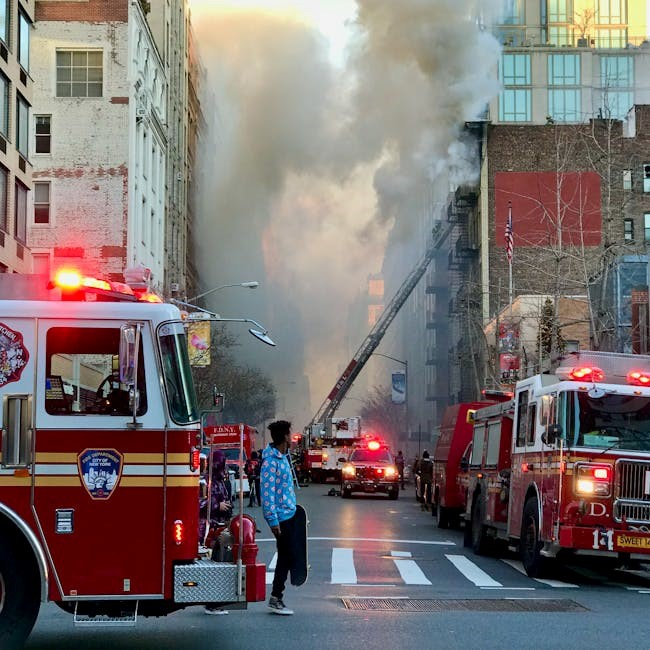
4.1. Placement Guidelines (Near Ceiling, Hallways, etc.)
Smoke alarms must be installed near the ceiling, as smoke rises, and placed in hallways outside sleeping areas for optimal detection. They should be at least 300mm away from walls, corners, and light fittings to minimize false alarms. Avoid installing near kitchens or bathrooms to reduce interference from cooking fumes or steam. Alarms should also be placed inside every bedroom, with additional units in living areas for larger homes. Correct placement ensures early detection of fires, improving safety and compliance with Victorian regulations. Proper positioning is critical to maximize effectiveness and meet legislative standards.
4.2. Number of Smoke Alarms Required Per Dwelling
In Victoria, smoke alarms are mandatory in every bedroom, hallway outside sleeping areas, and on every level of a dwelling. For homes built before 1997, at least one smoke alarm per level is required. Newer homes must have alarms in every bedroom and hallways. For larger properties, additional alarms may be needed to ensure full coverage. The Victorian Building Authority mandates compliance, with penalties for non-compliance. Proper installation ensures early fire detection, enhancing safety for all occupants. Adhering to these requirements is crucial for legal and safety standards.
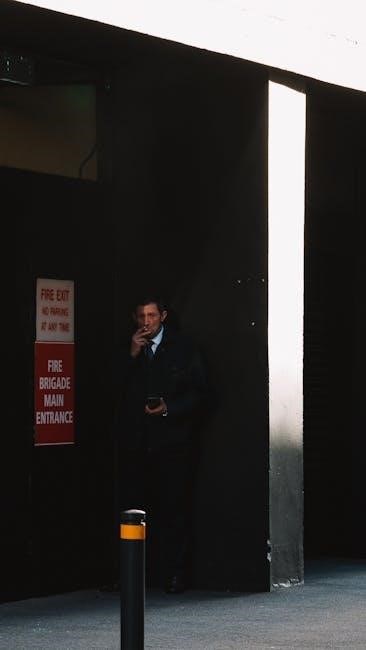
Maintenance and Testing
Regular testing ensures smoke alarms function correctly during emergencies. Monthly testing and annual battery replacement are crucial. Clean devices regularly and replace units every decade for safety.
5.1. Recommended Frequency of Testing
Smoke alarms in Victorian homes must be tested monthly to ensure proper function. This involves pressing the test button to verify the alarm sounds. Batteries should be replaced annually, or as specified by the manufacturer, unless the alarm is hardwired. Additionally, alarms should be cleaned every six months to remove dust and debris that may impair sensitivity. Replacement of the entire smoke alarm unit is required every 10 years or as per the manufacturer’s instructions. Regular testing and maintenance are critical to ensuring the safety of occupants in case of a fire emergency.
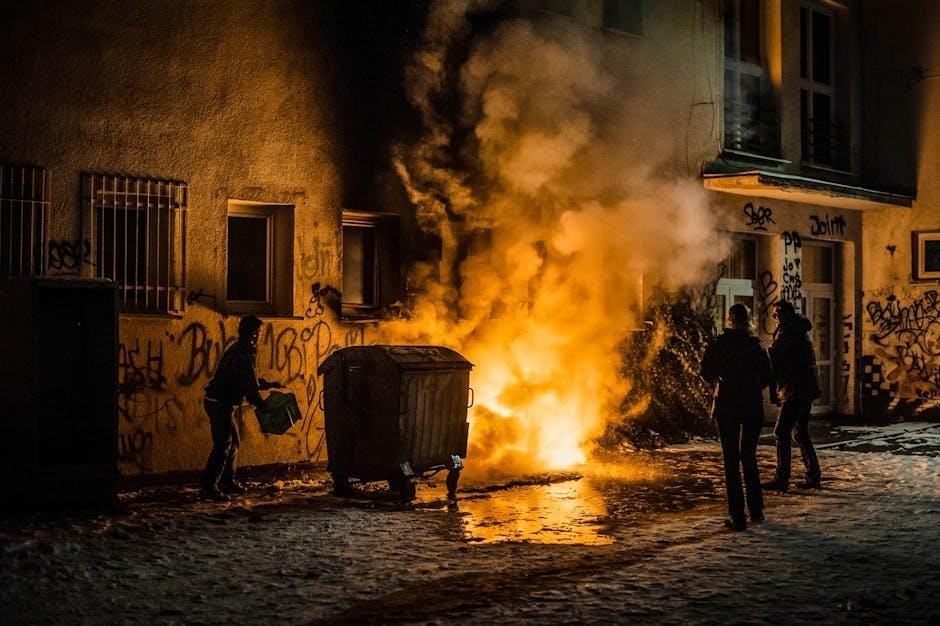
5.2. Landlord Responsibilities
Landlords in Victoria are legally required to ensure smoke alarms are installed in rental properties and functioning correctly. They must test smoke alarms before a new tenancy begins and maintain them throughout the tenancy. This includes replacing batteries, cleaning alarms, and ensuring they are free from damage. Landlords must also keep records of smoke alarm maintenance and testing. Failure to comply with these responsibilities can result in penalties. It is the landlord’s duty to provide a safe environment for tenants, adhering to all smoke alarm regulations outlined in Victorian law.
5.3. Tenant Responsibilities
Tenants in Victoria are required to test smoke alarms monthly, clean them regularly to ensure functionality, and notify landlords of any issues. They must not tamper with or remove smoke alarms. Tenants should also familiarize themselves with the location and operation of smoke alarms in their rental property. Failure to comply may result in penalties. It is essential for tenants to cooperate with landlords in maintaining smoke alarm systems, ensuring their safety and the safety of others in the premises. Regular checks and prompt communication are key to fulfilling tenant responsibilities under Victorian smoke alarm regulations.
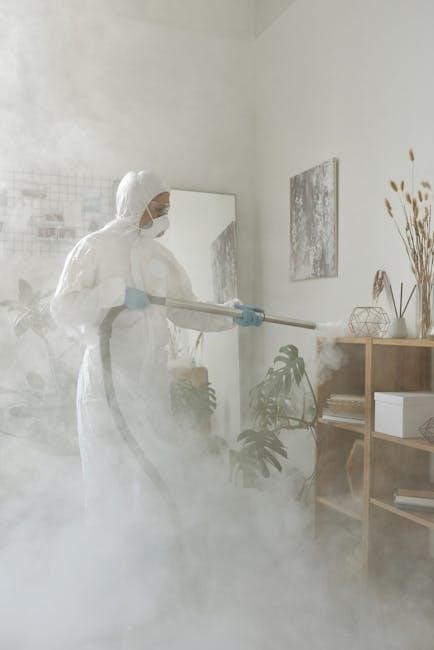
Penalties for Non-Compliance
Non-compliance with Victoria’s smoke alarm regulations can result in fines, with penalties applying to both landlords and tenants. These fines aim to enforce critical fire safety standards statewide.
6.1. Fines for Landlords and Property Owners
Landlords and property owners in Victoria face significant penalties for failing to comply with smoke alarm regulations. Under the Victorian Building Act 1993, fines can reach up to $1,500 for non-compliance. Repeat offenses may result in higher penalties, emphasizing the importance of adherence to safety standards. Local councils enforce these regulations, ensuring landlords maintain functional smoke alarms in rental properties. Failure to meet requirements can also lead to legal action if a fire occurs due to non-compliance. These penalties underscore the critical role landlords play in tenant safety and the legal consequences of negligence.
6.2. Consequences for Tenants
Tenants in Victoria who fail to meet smoke alarm responsibilities may face penalties. While landlords are primarily responsible for installation and maintenance, tenants must not tamper with or remove smoke alarms. Tenants who intentionally disable or damage smoke alarms can be fined up to $1,000. Additionally, tenants may be held liable if a fire occurs due to their negligence in maintaining smoke alarms. This underscores the importance of tenant cooperation in ensuring fire safety. Authorities enforce these rules to protect lives and property, emphasizing shared responsibility between tenants and landlords.

Special Requirements
Special requirements include smoke alarms for deaf or hard of hearing individuals and specific rules for rental properties, ensuring all Victorian residents are protected adequately.
7.1. Smoke Alarms for Deaf or Hard of Hearing
Victorian regulations mandate that smoke alarms for deaf or hard of hearing individuals must include additional features like vibrating under-pillow alarms or strobe lights. These devices ensure equal safety standards by providing visual or tactile alerts. They must be installed in bedrooms and comply with specific Australian Standards. Landlords are responsible for ensuring these specialized systems are functional and maintained. Tenants should also report any issues promptly. These requirements aim to create an inclusive safety environment, ensuring all residents, regardless of hearing ability, are adequately protected in emergencies. Compliance is strictly enforced to prevent risks.
7.2. Smoke Alarms in Rental Properties
Landlords in Victoria are legally required to install smoke alarms in all rental properties, ensuring compliance with AS 3786 standards. Alarms must be present in every bedroom, hallway, and living area. Hardwired smoke alarms or those with a 10-year battery are mandatory. Landlords must test alarms before each tenancy and replace batteries or devices if faulty. Tenants are responsible for monthly testing and must not remove batteries. Non-compliance can result in penalties for landlords, emphasizing the importance of adherence to these safety regulations to protect both tenants and property. Regular maintenance is crucial for ongoing safety.

Updates to Legislation
Victoria’s smoke alarm laws were updated in 2022, introducing stricter installation standards and expanded coverage requirements for rental properties and new dwellings. Compliance is mandatory by 2024.
8.1. Recent Changes (2021 and Beyond)
In 2021, Victoria introduced significant updates to smoke alarm regulations, effective from 2022. These changes mandate the installation of smoke alarms in all bedrooms and living areas, aligning with AS 3786:2014 standards. Hardwired alarms are now required in new homes and renovations, while existing properties must meet enhanced installation criteria. Additionally, rental properties face stricter compliance timelines, with landlords required to upgrade smoke alarms by 2024. These updates aim to improve fire safety and reduce risks, ensuring all residents are better protected in emergencies.
Resources and References
Access Victorian government resources and PDFs for detailed smoke alarm regulations, including compliance checklists and installation guides from the Victorian Building Authority and Consumer Affairs Victoria.
9.1. Victorian Government Guidelines
The Victorian government provides comprehensive guidelines on smoke alarm regulations through official resources. The Smoke Alarms in Residential Accommodation document outlines mandatory installation, maintenance, and compliance standards. Available as a downloadable PDF, it details requirements for landlords, tenants, and homeowners; The guidelines also cover penalties for non-compliance and offer practical advice for ensuring fire safety. These resources are accessible on the Victorian Building Authority and Consumer Affairs Victoria websites, ensuring everyone can access accurate and up-to-date information. They serve as a definitive reference for understanding and adhering to smoke alarm regulations in Victoria.
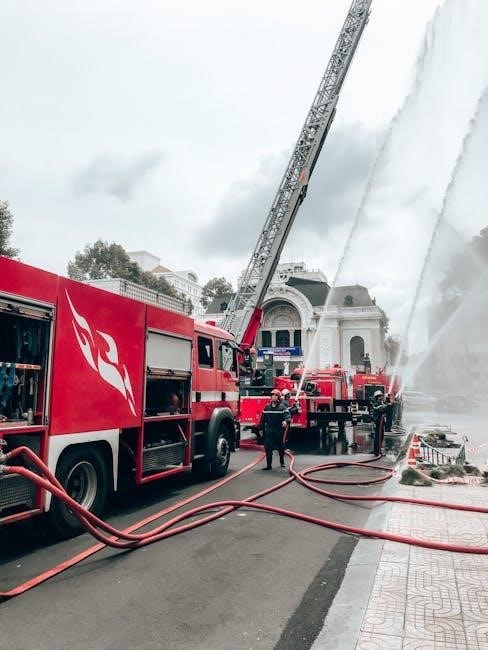
9.2. Smoke Alarm Brochures and PDFs
Victorian authorities publish brochures and PDF guides to simplify smoke alarm regulations. The Victorian Fire Alarm Solutions Guide provides detailed diagrams and installation tips. Another resource, the Fire Safety in Residential Buildings brochure, explains maintenance and testing procedures. These documents are available on government websites like the Country Fire Authority (CFA) and Victorian Building Authority (VBA). They serve as practical tools for homeowners, landlords, and tenants to ensure compliance with smoke alarm laws. These resources are regularly updated to reflect legislative changes, offering reliable and accessible information for all Victorians.
Adhering to Victorian smoke alarm regulations is crucial for safety and legal compliance. Proper installation, maintenance, and testing ensure effective fire detection and prevention in all dwellings.
10.1. Summary of Key Points
Victorian smoke alarm regulations emphasize the importance of fire safety through mandatory installation, maintenance, and testing of smoke alarms in all residential properties. Compliance with AS 3786 standards ensures reliability, while specific requirements for placement and number of alarms per dwelling maximize effectiveness. Landlords bear primary responsibility for installation and maintenance, with tenants obligated to report issues. Penalties for non-compliance highlight the seriousness of adhering to these regulations. Special provisions, such as alarms for the deaf or hard of hearing, ensure inclusivity. Regular updates to legislation reflect ongoing efforts to enhance fire safety measures statewide. Awareness and adherence to these regulations are crucial for protecting lives and property.
10.2. Final Thoughts on Compliance
Compliance with Victoria’s smoke alarm regulations is paramount to ensure the safety of residents and adherence to legal standards. Property owners must prioritize proper installation, maintenance, and testing to avoid penalties and safeguard lives. Tenants also play a role in reporting issues promptly. Staying informed about updates and understanding responsibilities fosters a safer community. By adhering to these regulations, individuals not only meet legal obligations but also contribute to preventing fire-related tragedies. Proactive compliance demonstrates a commitment to protecting property and, most importantly, human life.




About the author